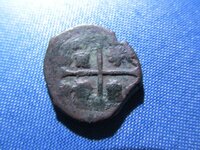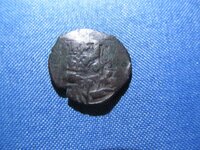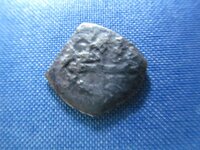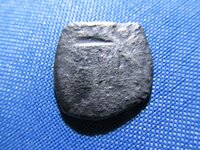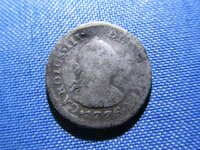Steve in PA
Gold Member
- Jul 5, 2010
- 9,600
- 14,217
- 🥇 Banner finds
- 4
- Detector(s) used
- Fisher F75, XP Deus, Equinox 600, Fisher 1270
- Primary Interest:
- All Treasure Hunting
I dug this cob yesterday in Washington County, PA. It weighs 4.98 grams which is less than a 2 reale and greater than a 1 reale. Any information as far as date, mint, etc. would be appreciated.







